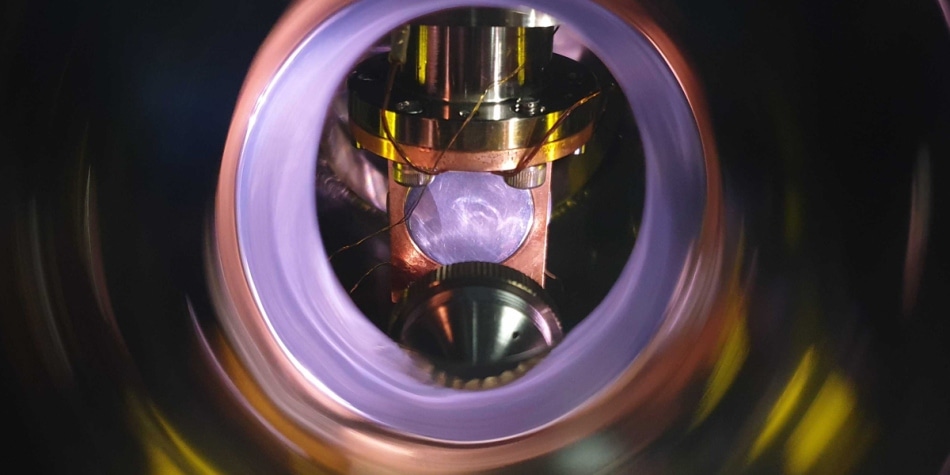Oct 1 2019
An experiment has revealed that nucleobases could have formed inside giant gas clouds interspersed between the stars. Nucleobases are one of the fundamental units of life.
 An inside look of an ultra-high vacuum reaction chamber that simulates chemical reactions in an interstellar cloud environment. (Image credit: Hokkaido University)
An inside look of an ultra-high vacuum reaction chamber that simulates chemical reactions in an interstellar cloud environment. (Image credit: Hokkaido University)
Nucleobases are compounds that form the essential building blocks of DNA. For the first time, researchers have detected nucleobases in a simulated environment that mimics gaseous clouds found interspersed between stars. The study outcomes have been reported in the Nature Communications journal and reach one step closer to gaining insights into the origins of life on Earth.
This result could be key to unravelling fundamental questions for humankind, such as what organic compounds existed during the formation of the solar system and how they contributed to the birth of life on Earth.
Yasuhiro Oba, Institute of Low Temperature Science, Hokkaido University
Scientists have already identified certain basic organic molecules essential for the origin of life in asteroids, comets, and interstellar molecular clouds: enormous gaseous clouds interspersed between stars.
These molecules are considered to have reached Earth by means of meteorite impacts nearly four billion years ago, offering ingredients vital for the chemical cocktail that enabled the origin of life. Gaining insights into the formation of these molecules is crucial to understanding the origins of life.
A nucleotide is the basic structural unit of DNA and RNA. It constitutes a nucleobase, a phosphate group, and a sugar molecule. Earlier studies simulating the conditions expected in interstellar molecular clouds have identified the existence of phosphate and sugar, but not nucleobases.
Currently, Yasuhiro Oba and co-workers at Hokkaido University, Kyushu University, and the Japan Agency for Marine-Earth Science and Technology (JAMSTEC) have employed sophisticated analytical techniques to identify the basic nucleobases in a mimicked interstellar cloud environment.
An ultra-high vacuum reaction chamber was used by the researchers to perform their experiments. A continuous supply of a gaseous mixture of carbon monoxide, water, methanol, and ammonia onto a cosmic-dust equivalent was maintained at a temperature of −263 °C.
Vacuum ultraviolet light for initiating chemical reactions was supplied by two deuterium discharge lamps fixed to the chamber. The process resulted in the formation of an icy film on the dust equivalent within the chamber.
A high-performance liquid chromatograph and a high-resolution mass spectrometer were used by the researchers to analyze the product that formed on the substrate once it was warmed to room temperature.
Latest developments in these technological tools enabled the researchers to identify the existence of the nucleobases uracil, cytosine, adenine, thymine, hypoxanthine, and xanthine. They also identified amino acids—the building blocks of proteins—and various other types of dipeptide, or a dimer of amino acid, in the same product.
The researchers suspect that previous experiments that mimicked interstellar molecular cloud environments would have synthesized nucleobases, but that the analytical tools employed were not sufficiently sensitive to detect them in complex mixtures.
Our findings suggest that the processes we reproduced could lead to the formation of the molecular precursors of life. The results could improve our understanding of the early stages of chemical evolution in space.
Yasuhiro Oba, Institute of Low Temperature Science, Hokkaido University
This research was supported by MEXT KAKENHI (JP25108006) and JSPS KAKENHI (JP15H05749, JP16H04083, JP17H04862).